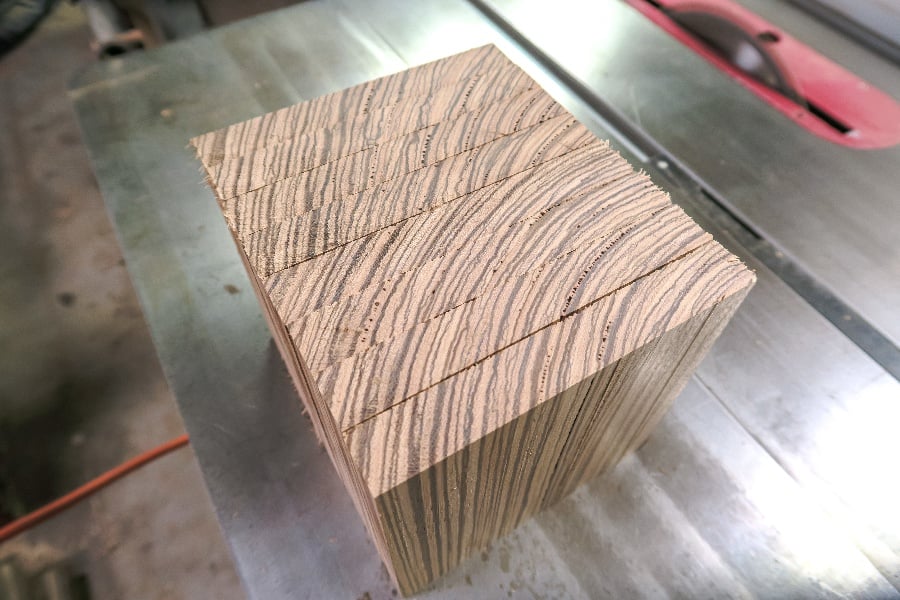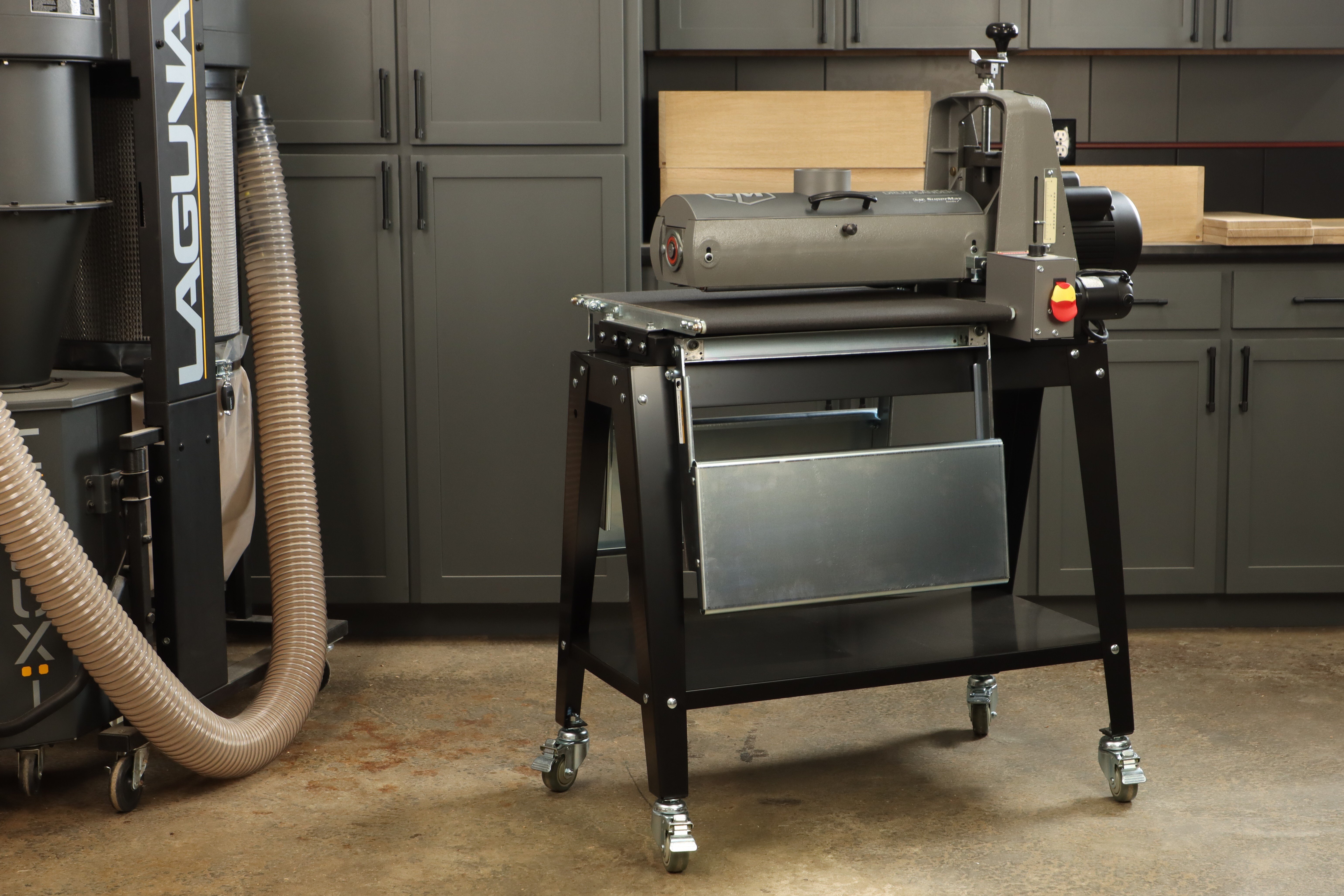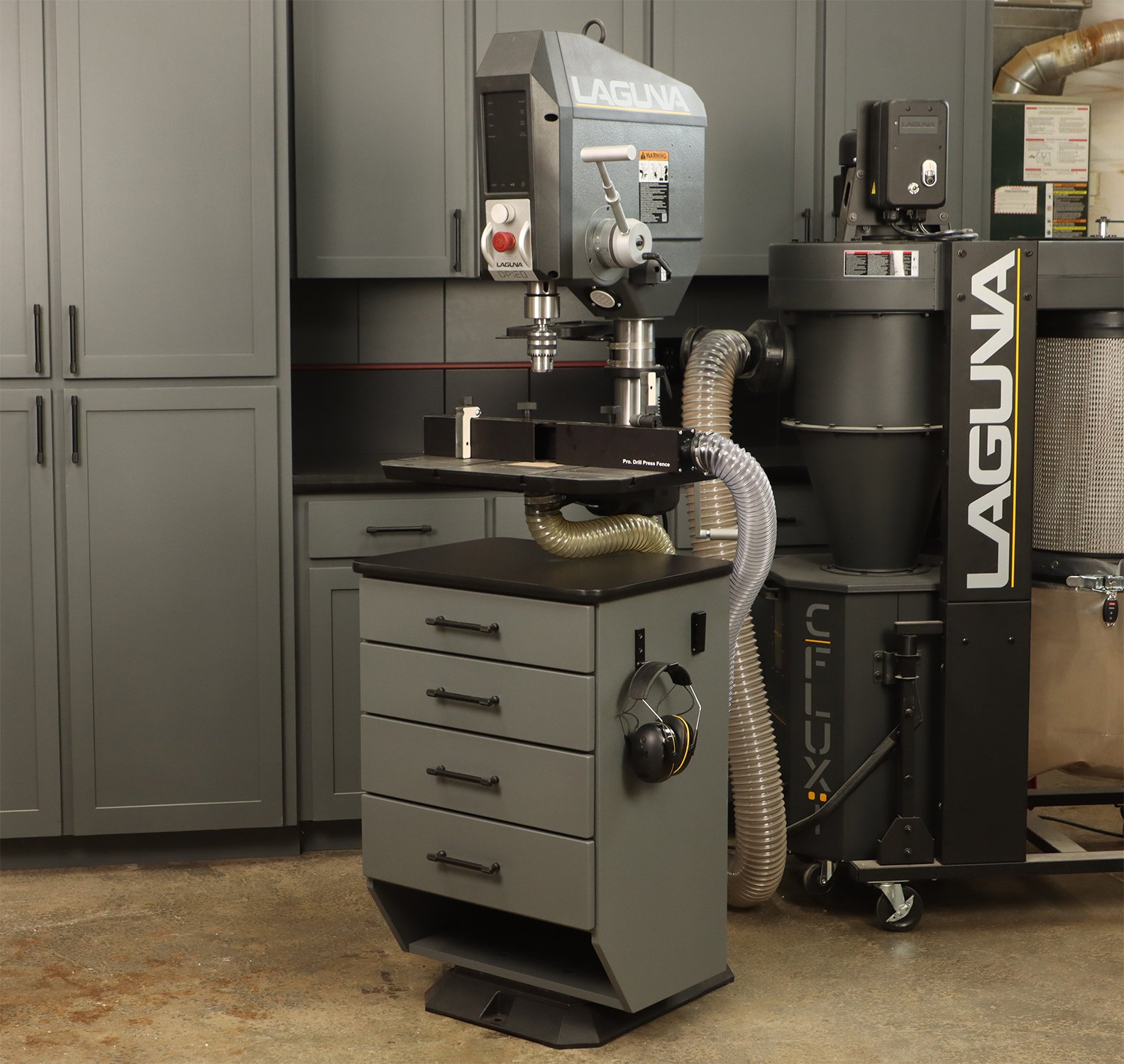Some of the most experienced woodworkers might not be fully aware of the causes of grain raising and how best to deal with it.
Because of this misunderstanding, they will often sand off more than necessary and fail to make things better. Knowing what’s going on inside the wood will go a long way in making it easier to work with it.
The term “grain raising” is a bit confusing because when woodworkers are discussing grain, they often mean those visible boundaries between the growth rings. Anyone looking at a board of plain-sawn oak can see those boundaries are wide and visible.
The grain raising that creates the fuzz on wood is something different. That grain is the tiny cells or fibers that make up the wood. These tiny cells are not visible except through the magnification provided by an electron microscope.
Once you can see them, you’ll realize they are more like a bundle of miniature soda straws (see the image below).

Photo credit: Wood-Under-Microscope (Tuindeco)
The cells in the wood are mostly hollow and much longer than they are thick, just like a soda straw. They are “cemented” together by a natural polymer called lignin, which also contains the extractives that give wood its color.
The average wood cell is approximately 3 mm long (the softwoods are 3 to 5 mm, while the hardwoods are 1 to 3 mm). The diameter of the typical wood cell is 1/100 of its length.
As mentioned, wood cells are minuscule: a 1-inch cube of wood contains about 5 million of them. These cells run vertically in the tree. Their primary function is to convey liquid from the roots to the leaves.
A few cells that are called ray cells store starches and sugars, and they run horizontally.
What effect does woodworking machinery have on the cell?
Whenever you’re sawing or planing the end grain of the wood, the sides of the cells tear and collapse, unless the blade is very sharp.
A similar thing happens when you saw or plane the long grain with dull blades, or even sand it with well-used sandpaper. It tears the wall of the cells and presses them into the cells beneath them instead of cutting them off cleanly.
If the wood receives moisture, either humidity or water, the pressed and torn areas swell to the surface, making it feel like peach fuzz. This is what is meant by grain raising.
Woodworkers should be aware that sometimes when machining under certain conditions, the cutting knife will push the wood fibers out of the way or squeeze them down into the surface instead of cutting them off.
Some of these conditions include:
- A dull knife
- High moisture content in the wood
- Lower density woods (lower lignin content)
- Slower feed rates when machining
- Wood fibers that are not as strong, such as with tension wood
How much should you sand after the grain is raised?
Those cells or fibers that were pressed and ripped by the beating they take from even the finest jointer or planer—or from dull sandpaper--are only a few cells deep.
If you sand deeper than the damage, especially using dull sandpaper, you will expose fresh wood that has almost the same vulnerability to grain raise.
If you are removing raised grain from wetted wood, be sure to use fresh fine-grit sandpaper, and make the wood feel smooth—don’t go any deeper. 320 to 400 grit sandpaper should work well.
If you are applying a wood finish such as shellac, lacquer, alkyd, polyurethane varnish, or a water-based finish, you can bury the raised grain with the first coat.
After it has dried, sand it smooth and then apply the additional coats.
What is the best method for raising the grain before staining?
Staining wood will alter the color and character of any wood, and many people choose to wipe on the stain, let it sit for a few minutes, and wipe it off—all without any preparation to the surface.
And while this method can often give satisfactory results quickly, there are other times, like when you are working with less porous woods like ash and maple, that it’s preferable to raise the grain, so the wood accepts more of the stain when you apply it.
Fortunately, this is not an involved process.
Here are the steps:
Prepare the surface
Step 1: Sand the surface to be stained, using 120 grit or finer sandpaper. Follow the direction of the wood grain during sanding since the stain will highlight any cross-grain marks.
Step 2: Vacuum the wood to remove dust from all cracks and give a clean work environment. This step ensures that no dirt or other impurities will get into the stain as you apply it.
Wipe the wood with a clean sponge.

Photo credit: DBIW Cabinetry and Woodworks
Step3: Wet a clean sponge with water and wipe down the wood. You don’t need to flood the surface, but you do need to get it wet. The water will penetrate the wood, and the grain will rise and open. Allow the wood to dry thoroughly before continuing.
Staining the Surface
Step 1: Use a clean cloth to apply stain to the surface. Use a generous amount to make sure it covers the whole surface. The grain you opened should now easily accept the stain. Let it sit for a few minutes to penetrate fully.

Photo credit: PopularWoodworking.com
Step 2: Wipe off the excess stain. If you’re working on a large area, go back into the adjacent sections to blend them. This step will prevent one area from being darker or lighter than others.
Step 3: Let the stain dry overnight, and then coat the wood with three layers of finish. Use either a brush or another applicator, depending on the size of the surface.
A few things to remember about raised grain
Water and wood don’t mix well, so using water-based finishes can put wood under a lot of stress.
If machining wasn’t perfect because of dull blades, overused sandpaper, or excessive pounding and pressure, those cells near the wood’s surface would move when moisture is added. That moisture can create raised grain, uneven surfaces, and separated grain.
It pays to use the finest-quality woodworking machinery, along with the best methods, to improve the appearance of your wood.




